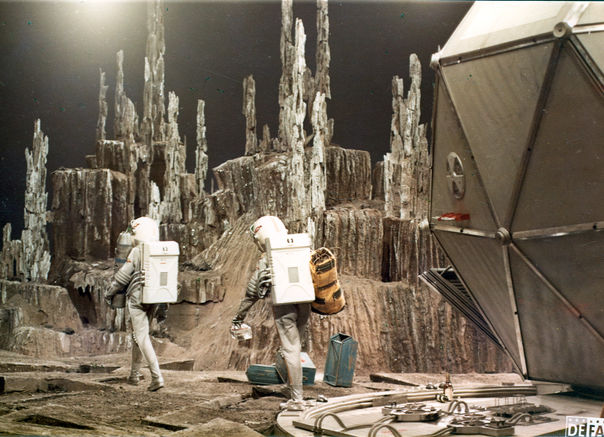THE ENEMY IMPERFECT
By Aslı Ildır

Film still from EOLOMEA © DEFA-Stiftung / Alexander Kühn
One of East Germany’s hidden treasures, EOLOMEA (Herrmann Zschoche, East Germany) is part of the 67th Berlinale Retrospektive programme “Future Imperfect,” a wide selection of science fiction films from different eras and nations. EOLOMEA premiered in 1972, the same year as Andrei Tarkovsky’s more celebrated SOLARIS, but took a less auteurist and more commercial approach than its Russian contemporary. Looking back 45 years later, EOLOMEA deserves interest by giving a vision of the future imagined within the conditions of the sci-fi genre during the détente period of Cold War era.
Moving past the 1950’s “us against other” narratives typified in Hollywood sci-fi films like WAR OF THE WORLDS (1953) or INVASION OF THE BODY SNATCHERS (1956), EOLOMEA takes on the notion of crossing new frontiers. In a future world where human civilization has spread to other planets, the film is built on the mystery around the disappearance of eight space ships during a mission to discover more planets to inhabit. Two scientists, Maria and Tal, are responsible for deciding whether to find or abandon the space ships, while Maria’s cosmonaut lover Dan desperately tries to turn back to Earth. Instead of the “friend or enemy” conflict of Cold War science fiction films, EOLOMEA features its characters listening to each other and learning to communicate, which can be appreciated within the political context of the détente period.
Shot in 70mm, Herrmann Zschoche applies sweeping wide-angle shots to a range of visuals, juxtaposing bright, open beach scenes that take place on Earth with the cold metallic spaceships floating in space. The film uses its non-linear structure to create a sense of nostalgia, telling the story of the love affair between Maria and Dan with humorous flashbacks to their old times on Earth. He also adds some unexplained, abstract interludes between scenes of the past and the present, with imagery that suggests a microorganism changing shape under a microscope, or a “big bang” explosion in the outer space. These contradictory ways to regard the same images summarize the general feeling in EOLOMEA: in a post-Cold War world, seeing and recognizing your enemy is not that easy anymore.

